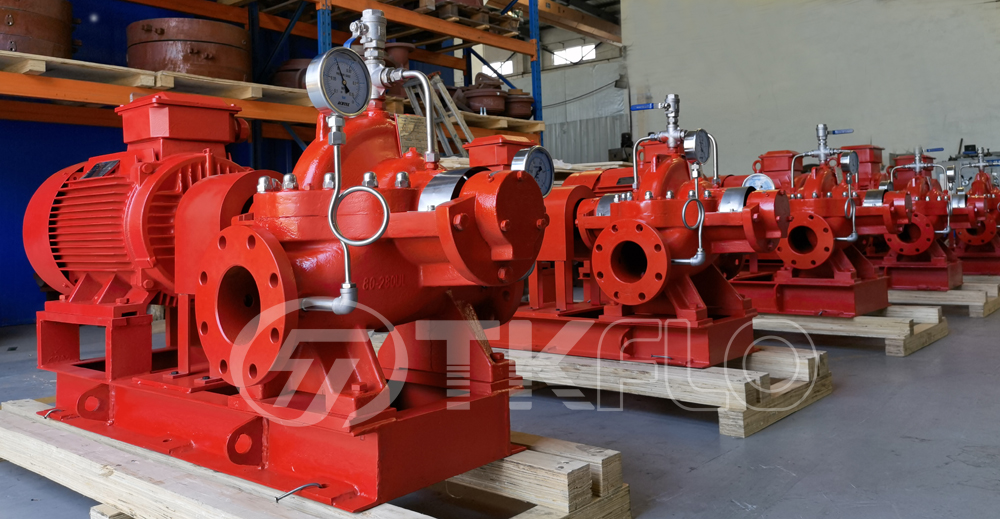
Introduction
Fire pumps are the backbone of fire protection systems, ensuring reliable water supply during emergencies. As technology evolves, the fire pump industry is undergoing a transformation driven by automation, predictive maintenance, and sustainability. These advancements enhance efficiency, reduce downtime, and align with global environmental goals.
This article explores the latest innovations shaping the future of fire pump technology, from smart monitoring systems to eco-friendly materials and beyond.

1. Automation and Smart Fire Pump Systems
a) IoT-Enabled Fire Pumps
Modern fire pumps now integrate Internet of Things (IoT) sensors that monitor:
● Real-time pressure and flow rates
●Pump performance and efficiency
●Early signs of mechanical failure
These systems transmit data to centralized dashboards, allowing facility managers to optimize performance remotely.
b) AI-Driven Fire Pump Controllers
Artificial Intelligence (AI) is revolutionizing fire pump control by:
● Automatically adjusting pump speed based on demand.
● Detecting anomalies (e.g., unusual vibrations, pressure drops) before they cause failures.
● Self-testing systems that comply with NFPA 25 standards without manual intervention.
c) Integration with Building Management Systems (BMS)
Fire pumps are increasingly linked to smart building networks, enabling:
● Automatic emergency response coordination with sprinklers and alarms.
● Seamless power switching between electric and backup diesel pumps.

2. Predictive Maintenance and Reliability Enhancements
a) Condition Monitoring with Vibration and Thermal Sensors
●Vibration analysis detects bearing wear, misalignment, and cavitation.
●Thermal imaging identifies overheating components before catastrophic failure.
b) Digital Twin Technology
●Virtual replicas of fire pumps simulate performance under different conditions.
●Predicts maintenance needs and optimizes service schedules.
c) Cloud-Based Analytics for Proactive Repairs
●Historical performance data helps forecast component lifespan.
●Automated alerts notify technicians when parts need replacement.

3. Sustainable Design Innovations
a) Energy-Efficient Pump Motors
●Variable Frequency Drives (VFDs) reduce energy consumption by adjusting motor speed to demand.
●IE4 and IE5 ultra-premium efficiency motors minimize carbon footprint.
b) Eco-Friendly Materials and Coatings
●Corrosion-resistant composite materials extend pump lifespan while reducing metal use.
●Non-toxic, biodegradable hydraulic fluids for environmentally sensitive areas.
c) Solar and Hybrid-Powered Fire Pumps
●Off-grid solar fire pumps provide emergency water supply in remote locations.
●Hybrid diesel-electric systems lower fuel consumption and emissions.

4. Challenges and Future Outlook
While these innovations offer significant benefits, challenges remain:
●High initial costs of smart and sustainable systems.
●Cybersecurity risks for IoT-connected fire pumps.
●Regulatory hurdles in adopting new technologies.
However, as AI, IoT, and green engineering mature, fire pumps will become:
✔ More autonomous
✔ Longer-lasting
✔ Environmentally sustainable
Conclusion
The future of fire pump technology lies in automation, predictive maintenance, and sustainable design. Smart sensors, AI-driven controls, and energy-efficient materials are transforming fire protection systems into smarter, greener, and more reliable solutions.
As industries and municipalities embrace these advancements, we can expect safer buildings, lower operational costs, and a reduced environmental impact—ensuring fire pumps remain effective guardians of life and property for decades to come.
Post time: Mar-31-2025
 sales@tkflow.com
sales@tkflow.com 
